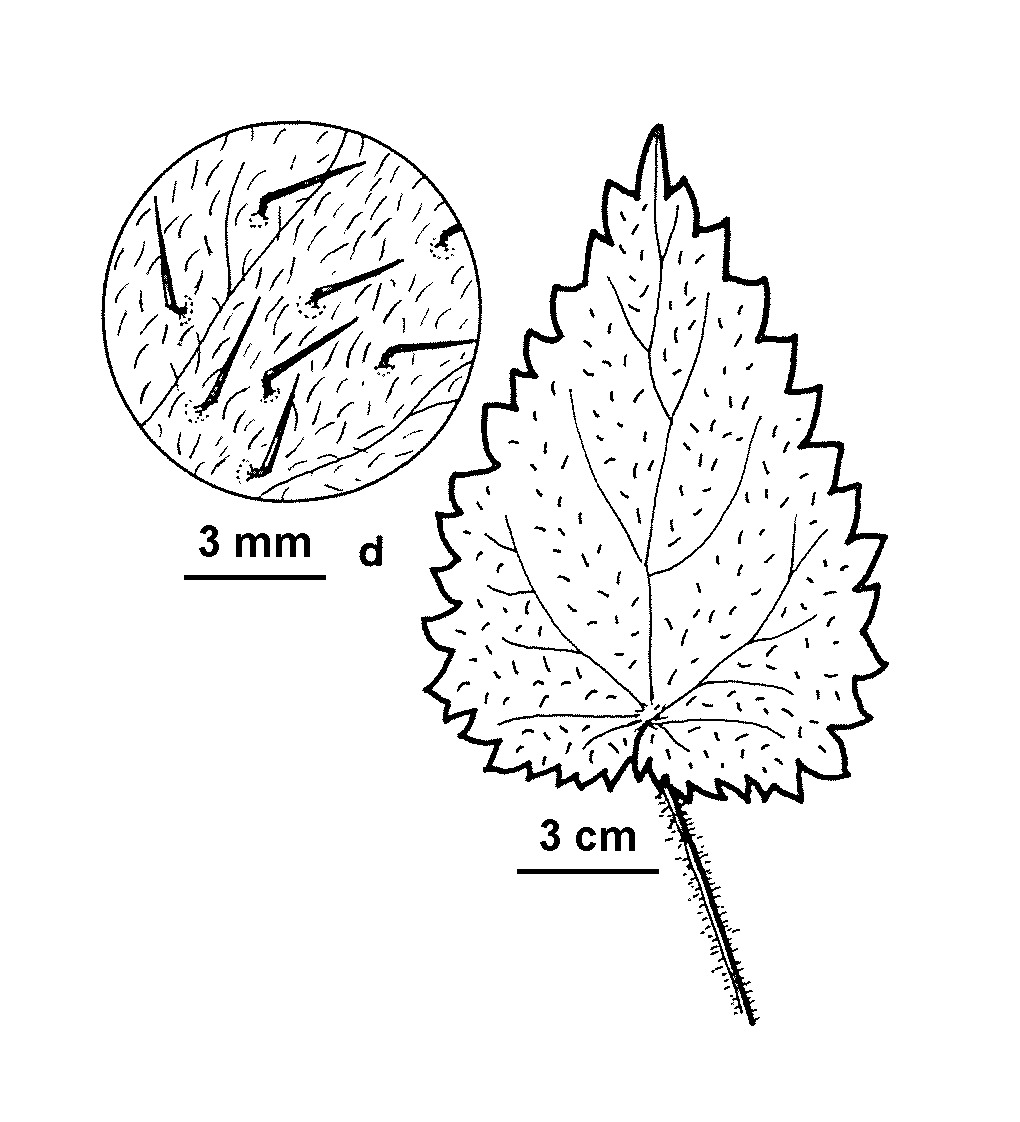Urtica dioica
L. Giant NettleUsually dioecious, perennial herb to 150 cm high; leaves and stems all markedly pubescent between the longer, scattered stinging hairs. Leaves lanceolate to ovate; base truncate to cordate; margins broadly toothed to incised, hairy; apex acute to tail-like; lamina to 12 cm long and 7 cm wide, both surfaces dark green; petiole of leaves towards base of plant 4–6 cm long, usually not more than half as long as lamina (but see below); stipules c. 10 mm long. Inflorescences unisexual, mostly longer than petiole. Flowers shortly pedicellate, c. 1 mm long, 1 mm wide, pubescent. Flowers Dec. (but probably all year).
VVP, VRiv, GipP, OtP, WaP, CVU, NIS, HSF, Strz, VAlp. Also naturalised Qld, NSW. Native of Europe. Known in Victoria from a collection in the Melbourne suburb of Essendon, which included only male plants, and at the Dookie Agricultural College.
In European populations of U. dioica, the petioles of the lower leaves are reportedly less than half as long as the lamina, while those of U. urens are said to be at least two-thirds the length of the lamina (Ball 1964). The single specimen of U. dioica collected from Victoria has lower leaves with petioles up to three-quarters the length of the lamina, while some specimens of U. urens have no leaves with the petiole more than half as long as the lamina. In all other respects, however, the Victorian specimen of U. dioica resembles European specimens of this species.
Entwisle, T.J. (1996). Urtica. In: Walsh, N.G.; Entwisle, T.J., Flora of Victoria Vol. 3, Dicotyledons Winteraceae to Myrtaceae, pp. 82–84. Inkata Press, Melbourne.
 Spinning
Spinning


